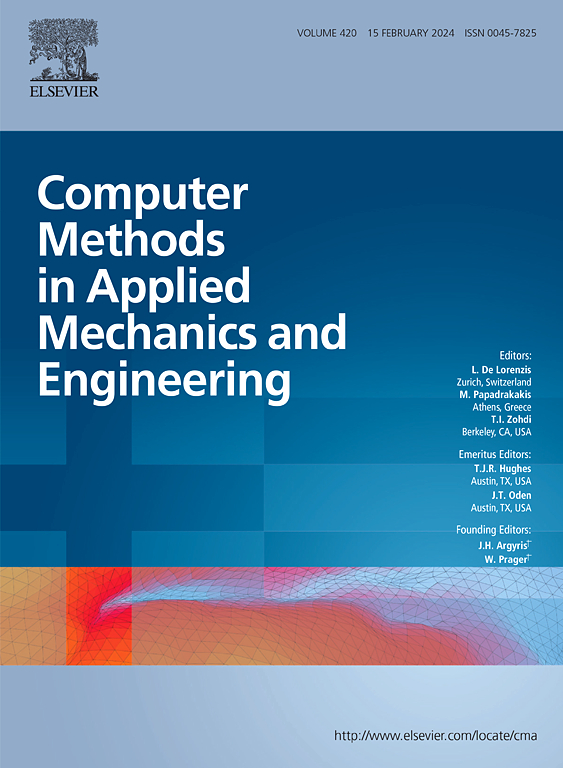The Lagrangian-Eulerian described Particle Flow Topology Optimization (PFTO) approach with isogeometric material point method
IF 6.9
1区 工程技术
Q1 ENGINEERING, MULTIDISCIPLINARY
Computer Methods in Applied Mechanics and Engineering
Pub Date : 2025-03-22
DOI:10.1016/j.cma.2025.117892
引用次数: 0
Abstract
Recently, several topology optimization methods in the Lagrangian or Eulerian description has accepted a wide of discussions, which have been applied to several design problems. In the current work, the primary intention is to propose the Particle Flow Topology Optimization (PFTO) approach in a Lagrangian-Eulerian description, which can sufficiently unify their unique characteristics and superiorities for the optimization with a higher effectiveness. Firstly, an Isogeometric Material Points Method (I-MPM) is applied to develop the numerical analysis framework for particles to solve the static equilibrium equation, which can maintain the consistency of geometrical model and analysis model using the same NURBS (non-uniform rational B-splines) basis functions. Secondly, a Lagrangian-Eulerian particle flow model is proposed for representing structural topology in the optimization, which consists of several critical components, namely the mappings of physical information (P2C: Particles to Control points, C2G: Control points to Gauss quadrature points), the inverse mappings of sensitivity information (G2C and C2P). Thirdly, the mathematical formulation for the maximization of structural loading-capability is developed using the PFTO approach, in which physical positions and material consumptions of particles are design variables to drive the evolvement of structural topology. The sensitivity analysis of the objective and constraint functions with respect to design variables at particles, namely physical information is derived in detail. Finally, several numerical design examples in 2D and 3D are performed to demonstrate the validity, effectiveness, and superiority of the proposed PFTO approach, and the indispensability of particles movement for the optimization is also sufficiently studied.
求助全文
约1分钟内获得全文
求助全文
来源期刊
CiteScore
12.70
自引率
15.30%
发文量
719
审稿时长
44 days
期刊介绍:
Computer Methods in Applied Mechanics and Engineering stands as a cornerstone in the realm of computational science and engineering. With a history spanning over five decades, the journal has been a key platform for disseminating papers on advanced mathematical modeling and numerical solutions. Interdisciplinary in nature, these contributions encompass mechanics, mathematics, computer science, and various scientific disciplines. The journal welcomes a broad range of computational methods addressing the simulation, analysis, and design of complex physical problems, making it a vital resource for researchers in the field.

 求助内容:
求助内容: 应助结果提醒方式:
应助结果提醒方式:


